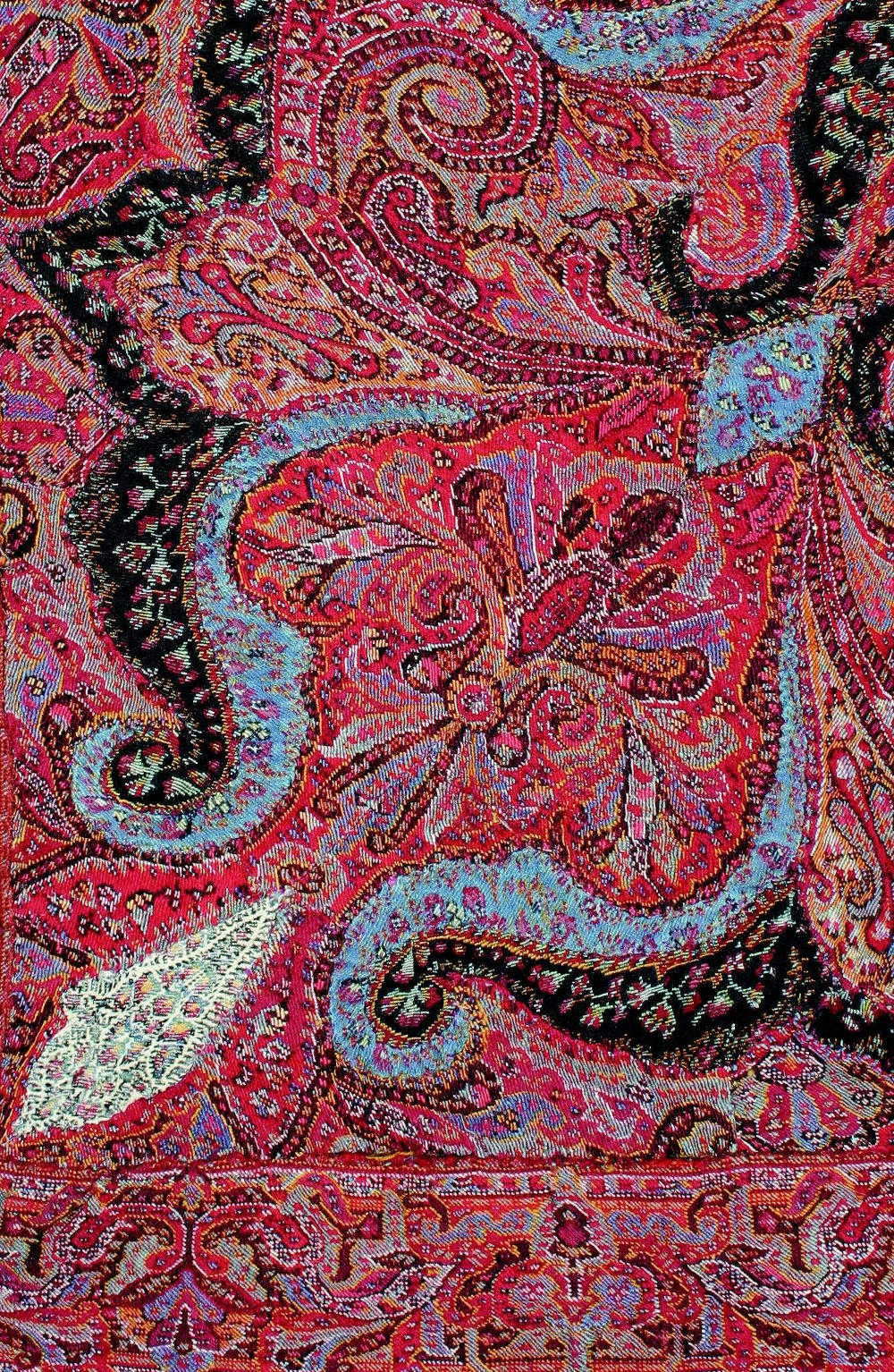
Origin: Paisley, Scotland
Year: 17th to 18th Century
Donor: Courtesy of Margaret Liebling
Materials: handwoven wool
Shawls have been woven in Kashmir since about the eleventh century, but the industry producing what we refer to as a Kashmir shawl is thought to have begun during the fifteenth and sixteenth centuries. During the fifteenth century Persian replaced Sanskrit as the official language and the word shawl derives from the Persian “shal,” denoting a class of woven fabric rather than an article of dress. During its history Kashmir had Mughal, Afghan and Sikh invasions, all of which left their influence stylistically on the shawls.
The Mughals of the Central Asian steppes conquered Kashmir in 1586. Under their rule the arts blossomed and shawl industries grew. Weavers came from Eastern Turkestan and employed the type of weave later used in Kashmir shawls. Up to this time Persian men had woven narrow waist girdles of shawl fabric, as part of male dress, and the Indians wove wide shoulder mantles, which were given as prestigious gifts. From ca. 1775, travelers, explorers, military personnel and members of the East India Company, appreciating their beauty and warmth brought shawls back from Kashmir as presents.
During the 100 years the shawl was in fashion, its shape changed to suit the dresses with which it was worn. From 1770-1810 simple high-waisted white muslin dresses became fashionable. With these neo-Classical dresses, simple long light stoles with narrow borders and deeper woven ends or small one-yard squares with narrow borders folded into a triangle were worn.
The 1820s saw great changes in the industry. Dresses were of silk, still with high-ish waists but with bodice detailing such a pintucks and wide puff sleeves, which required a larger shawl. With the Jacquard loom, shawls could be woven in one piece with much bolder design and more colours.
During the 1830s the skirt got larger, balanced by huge sleeves, until 1840 several starched white petticoats or a horsehair petticoats were worn, replaced in 1856 by whalebone hoops or the crinoline frame. With widening skirts the shawl really became popular, with every better class trousseau including one.
In Norwich, Paisley, Glasgow and other centers, printed shawls were also made and were immensely popular. Printers copied the designs of the woven examples, using wooden blocks and later blocks with the pattern lines inlaid with metal. The blocks could of course be interchanged to produce an infinite number of designs. Later, roller-printed shawls were produced. Millions of shawls were printed for the mass market on wool and cotton and wool and silk grounds.
A combination of events led to the decline of popularity of the shawl in the early 1870s. A shawl could not fall very successfully down the back with the bustle, that rear wired protrusion which became so fashionable at the time. The Franco-Prussian war of 1870-1871 halted exports of shawls from Kashmir, resulting in the collapse of the industry. By 1870 a woven jacquard shawl could be bought for £1.00 and an identical patterned cotton shawl for a few shillings. As shawls became so inexpensive that every woman could afford to own at least one, nobody wanted to wear them.
